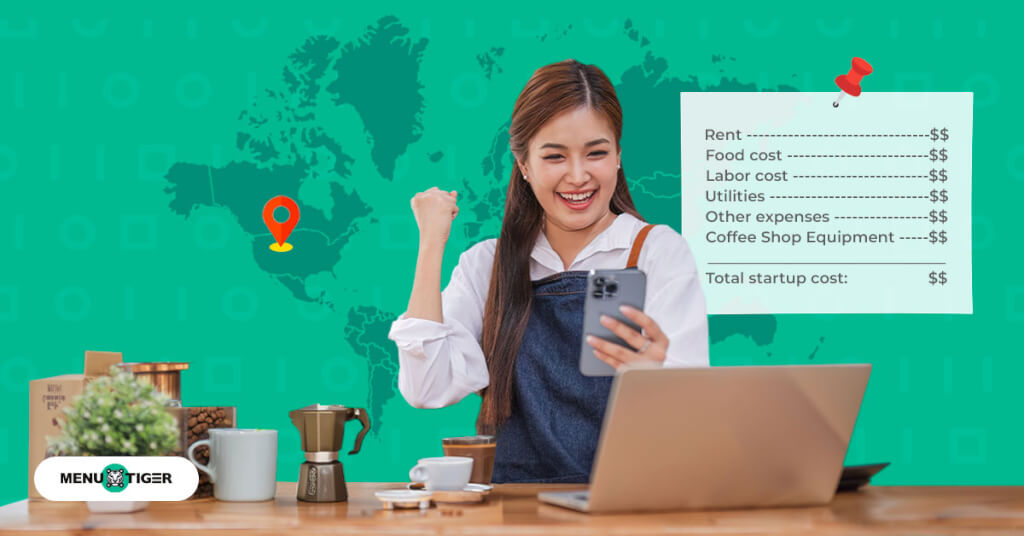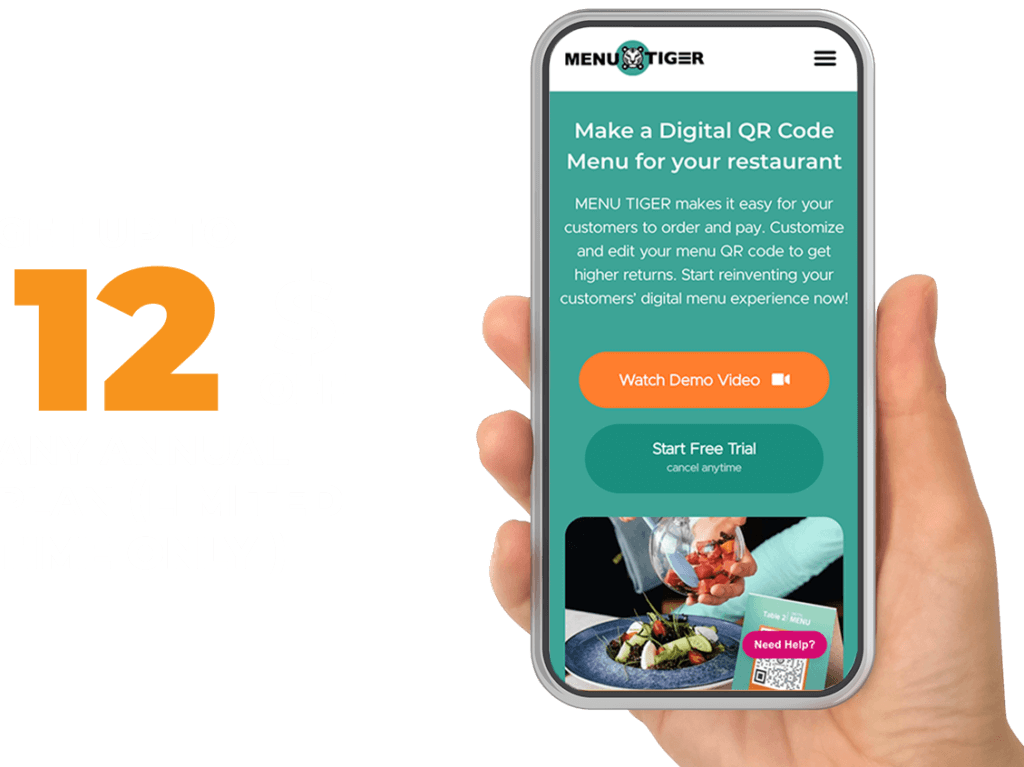It’s a given that starting a business from scratch, particularly in a dense coffee shop industry, will never be easy.
At some point, you can get overwhelmed by the things you must prepare, which can cost you a hefty bill.
So, you might want to ask: How much does it really cost to open a coffee shop?
Investopedia, one of the web’s biggest investment education sites, revealed that the coffee shop startup costs for a sit-down business format could total up to $275,000.
This amount covers the lease, equipment needed, construction and renovation, and initial inventory supplies. Expect this number to increase with other recurring expenses such as wages, utilities, licenses, and permits.
To help you in your financial planning, MENU TIGER QR code menu software compiled a budget breakdown as your guide.
Table of Contents
ToggleWhat’s the data saying: US coffee shop market size, value and revenue
Before you even start your business plan, you first have to understand the market you want to venture into. This is to determine the direction of your business, from your offerings down to your pricing.
Statista Research Department revealed that in 2022, there were 38,411 coffee shops in the US compared to the 37,000 tally in 2020. This number only suggests that the coffee shop industry and the demand for its consumers are growing.
To further look into the coffee shop industry trends and statistics, here are valuable insights to help you in your financial planning:
- According to Globe Newswire, a report on the US coffee shop market size was added to the Research and Market.com findings indicated that an estimated $8.06 billion is expected in 2024 and an increase of 3.69% by 2029.
- Statista’s 2022 report revealed that the coffee shop market value in the US exceeded $48 billion, a big leap for the coffee shop industry since the pandemic.
- Industry Biz research survey indicated that the industry shall be witnessing a growth of 7.2% from 2024 to 2031.
- A comprehensive industry analysis conducted by Majesty Coffee, a coffee shop in New Jersey, found that, on average, small coffee shops can make $60,000 to 160,000 annually, with $70 billion in annual sales nationwide.
- 73% of the 1,300 Americans drink coffee daily, and 36% can consume 3 to 5 cups a day, according to a DriveResearch survey.
- The total revenue for the coffee market in 2024 is projected to reach $11 million in the US.
How to start a coffee shop with the right startup costs
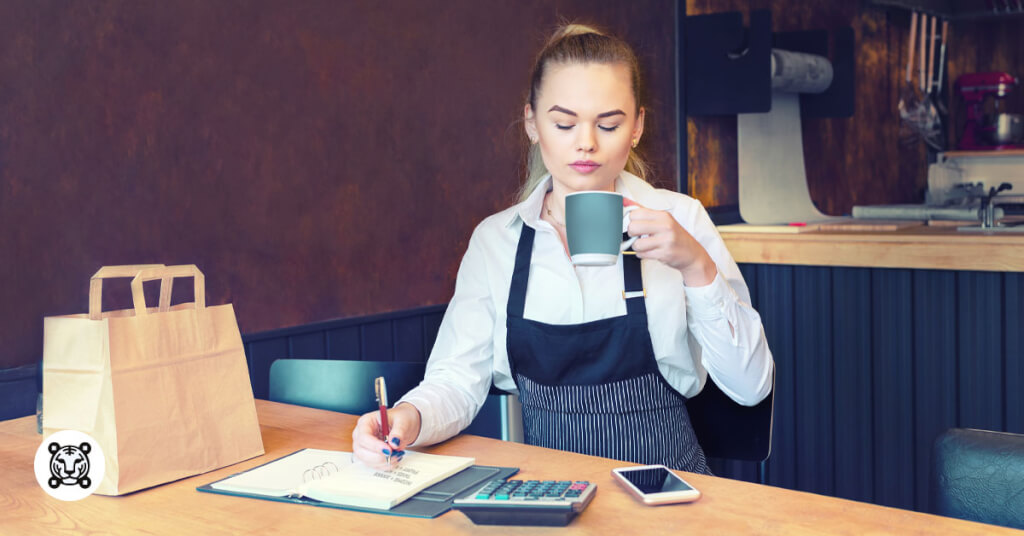
Now that you have the initial data regarding the industry let’s start discussing the cost breakdown for your startup coffee shop business.
1. Find the right location and space.
Where you set up your shop matters a lot, as it can either make or break it. So, finding the perfect spot can really affect your business’s success.
But it does not end there. Once you have a location, you can determine whether to lease (this would be a great choice if you’re still starting) or buy a space and how much you’ll spend on it.
For instance, if your target is to open in the densest boroughs of New York City, you must allocate an average median rent cost of $135 per square foot for class-A buildings.
Occupying a 100-square-foot space would cost you a total lease of $78,000 for a six-month contract.
2. Plan out the build-out and renovations.
Once you’ve secured a space for your business, expect costly construction and renovations, including the interior and exterior designs.
For those managing renovation or construction aspects of your coffee shop project, using the Joist app for contractors can simplify estimates, invoicing, and project payments efficiently.
According to Bigrentz, an online construction equipment rental marketplace, the average cost of commercial construction per square foot in the US is $490.
Let’s say your shop is about 100 square feet; the coffee shop start up costs are at least $49,000. However, depending on your location, the price can range from as little as $70 per square foot to over $1000.
Your interior and exterior costs will depend on your concept, which could be minimalist-Scandinavian or retro.
But the national average cost for an interior designer per room is around $1,900-$12,000, depending still on the city.
For tables and furniture, though, the total cost can vary depending on the quantity and quality you opt for.
According to Sage, an accounting software provider, it would cost around $80,000.
3. Prepare your coffee equipment.
Though having second-hand equipment could save you a lot of money, we highly recommend buying a new one.
In fact, you should invest in high-quality machines as these are the workhorse of your business. Keep in mind that you should buy what is necessary and functional first since you are still starting.
Here is the essential coffee shop equipment list for you to purchase:
- Grinders
Espresso machine and grinder should be the top of your priorities. This can grind beans extra fine to ensure consistent extraction and rich cream from the espresso.
A semi-automatic machine—commonly used in cafes- could cost around $3,000 and $7,500.
- Coffee brewers
For cafes with a constant flow of customers, brewing needs to be fast and reliable. This can be achieved by using an automated brewer, which can cost from $279 to $330.
For other types of brewers, here is the price list:
- Aeropress: $40 (retail store price)
- Pour-over kits: $77 (retail store price)
- French press: $17 (retail store price)
- Drip coffee maker: $70-$250 (retail store price)
Note: You don’t have to purchase them all. Just buy what you currently need for your business. The prices can still change depending on the brand and shops where you buy these items.
At most, you’ll need around $5,000 to acquire almost all the kinds of coffee makers.
- Decanters, satellite servers, airports
It is crucial to keep your brewed coffee at an optimal temperature and preserve its freshness throughout the day.
Decanters, satellite servers, and airports are indispensable tools that help you with that. The total price you’ll be spending on these is around $3,500.
- Hot water dispensers
For patrons who enjoy tea at your coffee shop, having a hot water dispenser ensures a consistent supply of water at the ideal temperature for steeping a flawless cup of tea.
This could cost $200 to $ 800 in retail stores, depending on the brand.
- Cold brew toddy system
If you want to offer smooth and refreshing variations of sought-after coffee beverages, you’ll definitely need a cold brew toddy system.
The commercial price for this can be $100-$200.
4. Look for essential food equipment.
- Light cooking equipment
If you wish to add quick meals to your menu, tools such as countertop convection ovens, toasters, microwaves, and grills can cost up to $500.
- Utensils
Mugs, plates, and other kitchenware should reflect the aesthetic of your business. You can allocate $800 for these.
- Refrigerator and freezers
Investing in refrigeration and freezer units that effectively preserve the freshness of your perishable items is necessary to meet health safety standards.
A budget refrigerator, which is basic but functional, can be around $500 and $1,000. If you go for a mid-range one, it can cost at most $2,000.
- Other equipment expenses
You can allocate around $1000 for napkins, packaging materials, and other things needed for your barista, such as gloves, aprons, bar rags, etc.
5. List down the initial inventory supplies
A well-stocked inventory ensures a smooth operation during your first few weeks of operation.
You have to take into consideration that the stock supplies can vary each month and expect some changes in the cost.
Here are the basic supplies you need before opening:
- Coffee beans and grounds: whole beans in different roasts (light, medium, dark) to cater to various preferences.
- Milk: whole, low-fat, skim, and non-dairy.
- Creamers
- Sugar, artificial sweeteners, and other natural sweeteners
- Tea bags
- Hot chocolate mix
- Cocoa powder for baking (if you’re going to serve an additional menu)
- Dispensing and service supplies: cups, lids, straws, napkins, condiment dispensers, coffee stirrers, trays and food containers, to-go bags
- Cleaning and sanitation supplies
Overall, you need to allocate a minimum of $5,000 for a month of supply. Take note that this can still go up, specifically with the quality and quantity of coffee beans you’re getting.
6. Research about the permits and licenses in your area.
Recurring expenses like permits and licenses can add up to your overall coffee shop start up costs. However, it needs to be accomplished in order to open the business under the guidance of the local government regulations.
Though each location differs, here is a list of common permits and licenses you need to acquire:https://www.investopedia.com/terms/e/expense.asp
- Business license: $50-$500 (may vary)
- Doing Business As (DBA) license: $10-$100 (may vary)
- Retail food service license: $600 (may vary)
- Resale license for sales tax (applicable for a state that charges sales tax to the end of consumer): $15 per location (Nevada)
- Sign permit: $50-$350 (may vary)
- Food handler’s permit: $5-$15 (may vary)

List of coffee shop expenses to add to your coffee shopstartup cost
Utilities
Include expenses like electricity, water, gas, and other utilities your cafe business will need.
Consider the costs of heating and cooling, as well as any special equipment like refrigerators or espresso machines that might consume significant energy.
At most, you’ll be charged about $2,000 per month.
Salary
The ZipRecruiter job site revealed that the average hourly rate for a barista and cafe waitstaff will be $16 in April 2024.
You’ll need to prepare approximately $10,000 for two staff for a month of operation.
Take note that this is just the regular wage; overtime pay can still add to the amount.
Marketing and promotions
You also need advertising, promotions, and marketing materials funds to attract your coffee shop.
This could include social media campaigns, flyers, and other marketing initiatives to create a buzz around your area.
For example, if you want to take a professional commercial shoot for your coffee shop business, a freelance videographer has an average day rate of around $600 to $1,000, excluding the output, which roughly costs $125.
However, the rate still depends on the experience of the videographer and the camera being used.
Maintenance and repairs
Set aside money for ongoing maintenance and unexpected repairs.
You must ensure the quality of your offerings and the service you provide for your customers.
According to Majesty Coffee, the annual cost for this can range between $1,000 to $5,000.
Technologies
Investing in technologies can be a great help for you in simplifying and expediting your services. This is particularly beneficial in the long run to provide an efficient customer experience.
Here are some tools you can start with:
- Interactive menu QR code software
This offers a platform for customers to view the menu on their smartphones, simplifying operations with features like order monitoring and cashless transactions.
You can get this software via digital menu providers like MENU TIGER, which offers different subscription options that grant access to various features that enable you to improve your operations.
A monthly regular, advanced, and premium accounts can cost $17, $46, and $119, respectively.
- POS system
A conventional point of sale (POS) system typically costs $2,000, covering hardware, software, and installation fees for the initial year.
Alternatively, you can use a cloud-based POS, which tends to be more cost-effective.
With subscription plans or one-time payments available for as little as $1,000, it presents a more budget-friendly option.
Remember: You don’t have to acquire these all at once in your cafe. Just choose one that best fits your needs at the moment.
Contingency fund
Some businesses don’t allocate a budget for contingency funds because it is the least priority.
However, you must understand that doing business is financially risky, so you must be ready for unexpected spending.
To determine how much you will allocate, calculate your monthly expenses and multiply this for at least three to six months of operation.
Let us say your total monthly cost would be $15,000. For a three-month contingency fund, you need to set aside $45,000.
Note: This amount can vary depending on your profit margin and actual expenses. Consider this your emergency fund, reserved for unexpected events such as natural disasters or a sudden decline in business.
5 ways to trim down your startup costs for a coffee shop.
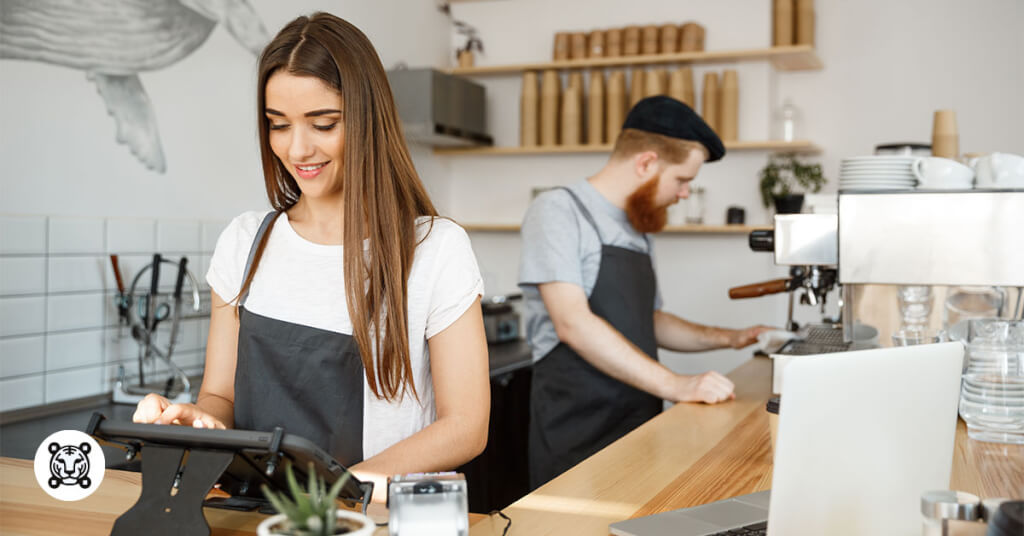
Start small and simple
Consider launching a minimalistic approach.
Begin with a limited menu that offers essential items, such as coffee, tea, and a few pastries. This reduces initial equipment costs, inventory expenses, and staffing requirements.
One great way to ease into the business without overspending is by hosting a soft opening.
If you’re wondering what is a soft opening, it’s essentially a trial run before your grand launch, allowing you to refine operations, gather customer feedback, and make adjustments—all without the pressure of a fully operational cafe from day one.
As your business grows, you can now gradually expand your offerings and services.
Negotiate with suppliers
Negotiating with suppliers can significantly lower startup costs for a coffeeshop.
But keep in mind that it does not happen overnight: You have to establish a strong relationship with vendors to negotiate bulk discounts on coffee beans, syrups, cups, and other supplies you need.
Consider joining a cooperative purchasing group with other local businesses to get reasonable prices with bulky orders.
Opt for a QR code menu
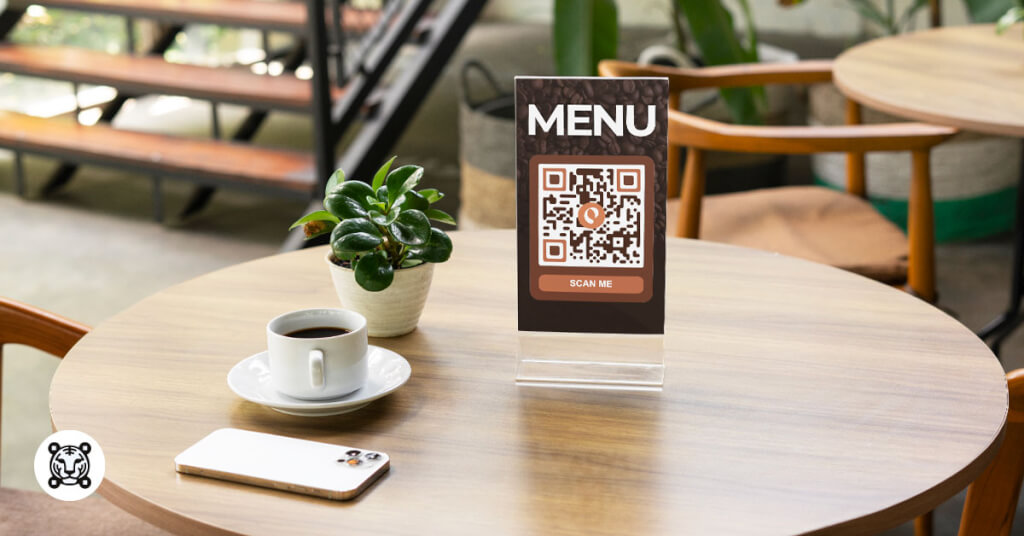
Using technology like a QR code menu can indeed trim down your coffee shop startup costs without compromising efficiency and customer experience.
It takes away the need for you to design and print traditional paper menus, which can cost a hefty amount.
Modification and updates in your menu items, pricing, and promotions in real time are also made easy—thanks to this smart technology.
Above all, it streamlines your ordering process, as customers can access your offerings by scanning the QR code using their mobile phones.
This level of convenience allows them to order at their own pace, making them feel at ease as they sit down to try your menu.
Pro tip: To cater to various customer demographics, put clear instructions on how to scan a menu QR code to avoid delays in their transactions.
Use alternative funding sources
Instead of relying solely on traditional bank loans or personal savings, explore alternative funding sources to finance coffee shop startups.
You can do crowdfunding campaigns, small business grants, or partnerships with investors who are interested in the food and beverage industry.
These options can provide additional capital without incurring high-interest debt.
DIY and sweat equity
Embrace do-it-yourself approaches whenever possible to save on labor costs.
For instance, you can handle tasks like interior design, painting, and minor repairs yourself or seek the help of your friends and family members.
You can also offer equity or profit-sharing opportunities to skilled individuals who are willing to contribute their expertise in exchange for a stake in the business.
This ‘sweat equity’ arrangement can help you access valuable talent without upfront financial expenses.
QR code menu technology for seasoned and startup businesses
Opening a coffee shop might cost you a lot, especially if you’re still new to the scene. And maintaining top-quality service of a business that’s been running for years entails massive costs as well.
You may make bad financial decisions along the process, which is normal for business owners.
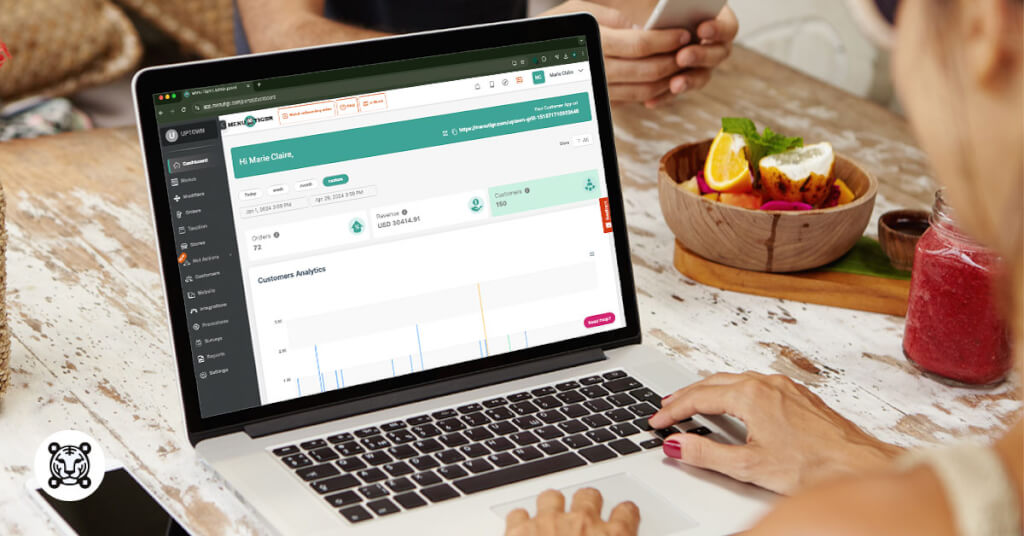
But having cost-saving tricks in your pocket could keep you from breaking the bank. One of those is leveraging restaurant technology like MENU TIGER digital menu software.
You’re in a modernized business setting, so having advanced tools like this will streamline your overall operations while saving money from other aspects.
Here’s how you can benefit from it:
Minimal investment
For startups with limited capital, a QR code food ordering software provides a budget-friendly alternative to traditional printed menus.
It eliminates the need for printing costs, menu design fees, and updates, allowing your business to allocate its resources more efficiently.
Labor optimization
With a smart menu in your cafe, customers can simply scan the code using their smartphones to access your menu, eliminating the need for waitstaff to take orders and explain the menu items themselves.
This frees up the staff to focus on other tasks, such as serving the food or washing the dishes, suggesting that you don’t need to hire a huge number of staff.
Easy menu updates
Updating a printed menu can be time-consuming and costly.
With QR codes, menu changes are instantaneous and hassle-free. This helps businesses modify their offerings without incurring additional costs.
All you have to do is open a digital menu QR code software account, create your menu, and edit the offerings using the software from time to time.
No need to trash your current menus and reprint new ones when there are changes in your prices, menu items, and seasonal promotions.
Space-saving
Startups often operate in small spaces where storing printed menus can be challenging.
One of the benefits of QR cod-based menu is you can free up valuable space to be used as additional storage for supplies or displaying merchandise.
Simplified transactions
MENU TIGER’s mobile payment options, such as Paypal and Stripe, make it easy for customers to complete their order transactions without the need to wait in line or be accommodated by your busy staff.
Analytics and insights
This food menu QR code software enables you to track customer interactions and gather valuable data, such as popular menu items, peak ordering times, and customer preferences.
This data can assist you in strategic decision-making, menu optimization, and marketing efforts.

Brew your business today with QR code menu software
Coffee shop startup costs can vary depending on many factors: location, concept, suppliers, equipment, etc.
At some point, you get overwhelmed with many things that affect your financial decision-making process.
Well, that’s basically a learning experience for an entrepreneur like you.
To help you minimize your expenses in some aspects of your business, having technology like a restaurant management software is a cost-saving choice for you to take.
Not only that, MENU TIGER offers affordable prices with top-tier features and solutions that will definitely be a great help to your business.
All you need to do is visit the website, create an account, and see where the aroma of your coffee can bring you.
FAQs
The startup cost for a small coffee shop can vary significantly depending on various factors like location, size, equipment, and amenities.
However, the estimated total cost of opening a coffee shop would be around $275,000. Take note that this can vary depending on the factors listed.
The profitability of a coffee shop can vary widely depending on numerous factors such as location, size, overhead costs, quality of products, and management efficiency.
Generally, this has the potential to be profitable ventures due to their popularity and relatively high-profit margins on items like specialty coffee drinks and pastries.

